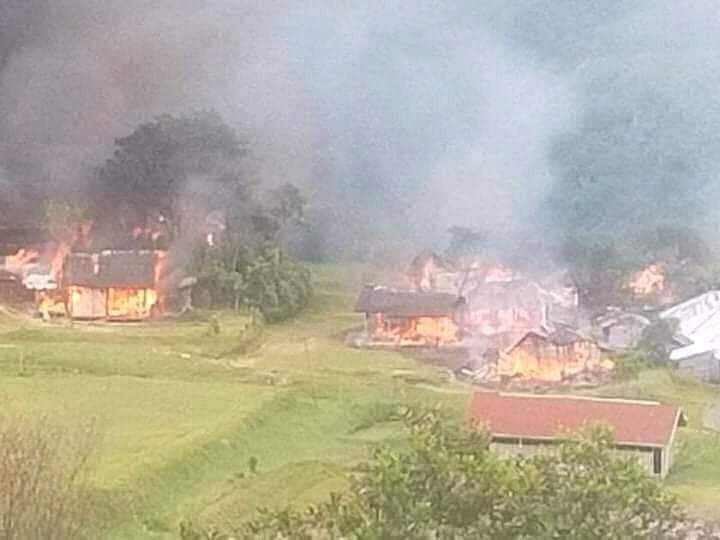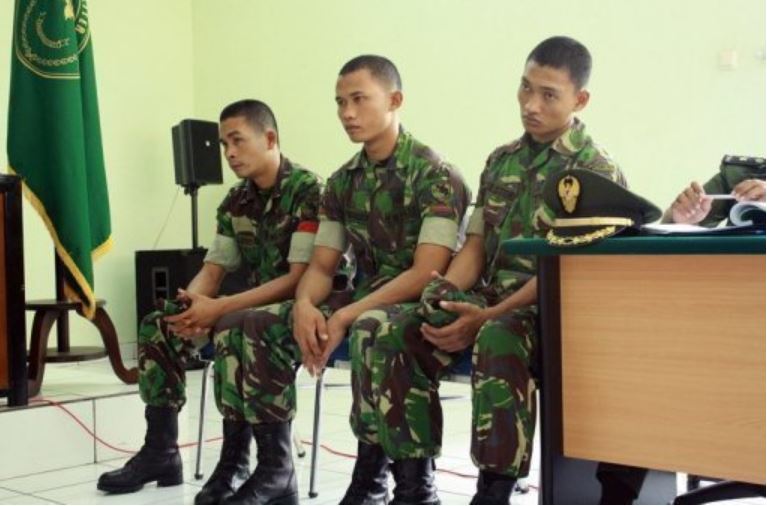As of September 2024, more than 79,867 people in West Papua remain internally displaced as a result of armed conflict between Indonesian security forces and the West Papua National Liberation Army (TPNPB). New internal displacements between June and August 2024 reportedly occurred in the regencies Maybrat and Puncak. In the Paniai Regency, not all internally displaced persons (IDPs) returned to their homes after being displaced due to a security force raid in the Bibida District in April 2024.
IDPs who decided to return to their villages are facing extraordinary military presence and surveillance by security force members. In the Paniai Regency, security force members have made attempts to set up new security posts near indigenous villages, increasing the potential for the occurrence of armed clashes near civilian settlements and human rights abuses against residents. Former IDPs from Maybrat reported that they must live under constant surveillance by the military after returning to their home villages, while education and healthcare facilities are not fully functional.
While the Government of Indonesia continues to deny the existence of IDPs in West Papua, Indonesian churches have taken the initiative to research the situation of the IDPs. The results were published in early September 2024. Human Rights Monitor has not received updated information on the condition and numbers of internally displaced persons (IDPs) in Pegunungan Bintang, Nduga, Intan Jaya, Yahukimo, Fakfak, and Puncak regencies in the past three months.
New research on IDPs in West Papua
In September 2024, the Bishop’s Conference of Indonesia, the West Papua Council of Churches, and the Fellowship of Churches in Indonesia published joint research results on IDPs in West Papua. The research was conducted by a collective of researchers from various fields, including migration, socio-politics, law and social justice, religion, and humanitarianism. Data was collected in July-August 2024 and obtained firsthand from 70 IDPs, all indigenous Papuans.
The research identified the top four difficulties they faced were lack of food (97%), health care (87%), economic/livelihood factors (81%), and loss of access to free education (90%). Some assistance was provided by church groups (30%), family/relatives (29%), and/or 24% from non-governmental organisations (NGOs) or solidarity groups. Local government support was reported to be very low. After more than three years, half of the respondents reported not receiving any assistance. Accordingly, two-thirds of IDPs mentioned they do not feel safe in their current situation.
All respondents cited ‘armed conflict’ as the main cause of their displacement (100%). ‘Fear’ was mentioned by 97% of all respondents. A total of 41% of displaced families reported that they were intimidated by parties to the conflict and 39% of respondents revealed that their families were directly threatened. IDP respondents reported that their average period of displacement was more than three years, which included a period of between one and two years of moving around in the forest on foot. IDP respondents reported spending 1-2 years in forest displacement, usually walking long distances. About two-thirds of the respondents were constantly on the move or sleeping in the open or under tents/tarps.
The main considerations that influence IDPs to return are economic and livelihood issues if they return to their villages (53%), and the lack of security in their home village (70%). 39% of respondents stated they would not return because of threats from conflict parties.
The research illustrates that internal displacement has become a chronic problem in West Papua, given the duration and intensity of displacement. The persons interviewed in average internally displaced for more than three years. Some of them lived in forest shelters for more than 16 months under poor living conditions (97% reported not having enough food), facing psychosocial trauma and vulnerability (66% of respondents feel unsafe in their current location).
Paniai
A security force raid in the Bibida District, Paniai Regency, caused the internal displacement of an estimated more than 5,000 persons from 15 villages in the districts Ekadide, Aradide, Bibida and Paniai Timur in mid-June 2024. Other observers stated their number reached up to 7,600 IDPs, composed of indigenous Mee and Moni people. On 25 June 2024, security forces accompanied more than 1,200 IDPs from the Catholic Salib Suci Church to their villages. In contrast to many other conflict-affected regencies in West Papua, the local government quickly reacted to the humanitarian crisis. Parliament members and the Paniai Regent visited the IDPs in Madi and the Gerbang Sadu Village in Nabire Regency, on 16 June 2024. They donated food and financial support of 100 million rupiah (about € 5,672) to the IDP shelters in Madi and Nabire.
Not all of the IDPs returned home as of late July 2024. Figures compiled by local church workers in late July 2024 concluded that only about 2,500 IDPs had returned to their homes. According to information from a local solidarity group, about 400 IDPs who had fled to Nabire (see photo below, Source: Jubi) returned to Bibida and Paniai Timur on 22 July 2024. Their return was funded by solidarity groups without financial support from the local government.
A possible reason for IDPs to return to their home is aggravated by the attempt to expand the military infrastructure in the Paniai Regency. In early July 2024, the indigenous communities rejected the proposed establishment of a new military post in the Aradide Regency. A Health Centre (Puskesmas) in the Bibida District was reportedly still occupied by military members to accommodate military personnel as of late July 2024.
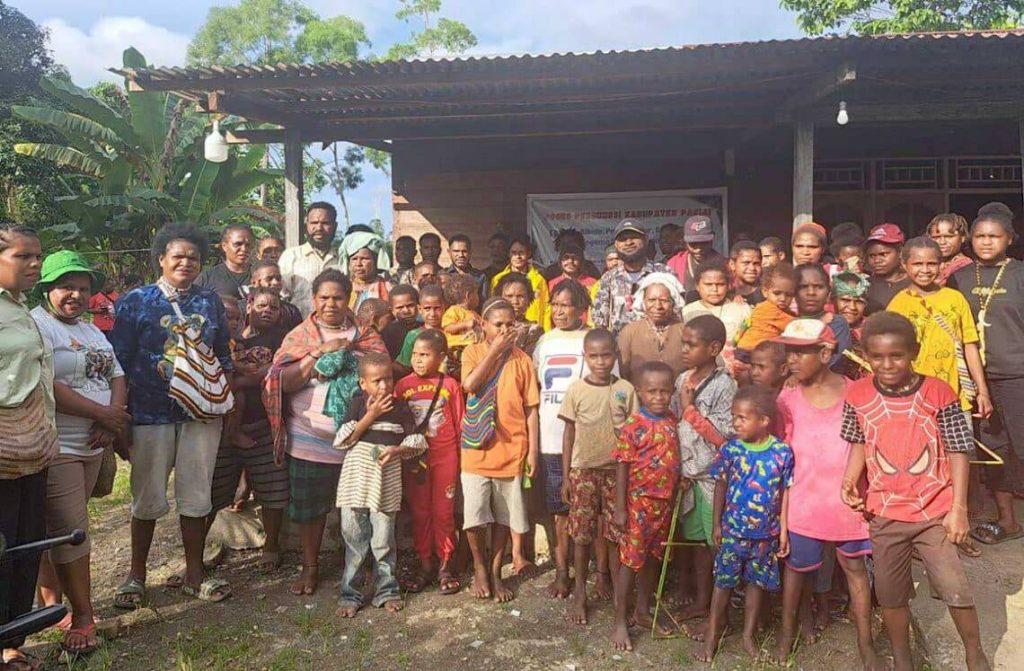
Maybrat
Human rights defenders observed a new mode of military operations in the Maybrat Regency. According to the information received, an additional 48 civilians had to leave their forest shelters following attacks by the military near Kisor Village, Aifat Selatan District. On 9 August 2024, military members reportedly bombed eleven houses with mortar grenades from drones and the ground (see photos below, source: WPCC).
Some IDPs have taken refuge in the forest since September 2021 and survived depending on nature. The villages in the greater Aifat area continue to be under the control of the military. Military personnel continue occupying offices, schools, and homes, while healthcare facilities are being neglected.
Residents are afraid to go home or even go out on the street. Military personnel require villagers to report before leaving and upon return if they work in their gardens. Some IDPs stated that military members prohibited them from visiting gardens in certain areas or told them to work for a limited period.
The National Human Rights Commission (Komnas HAM) announced in late August 2024, that Komnas HAM Commissioners would soon conduct a field visit to Maybrat. The visit should serve the purpose of evaluating the implementation of recommendations by Komnas HAM to the local government during a former visit to Maybrat.


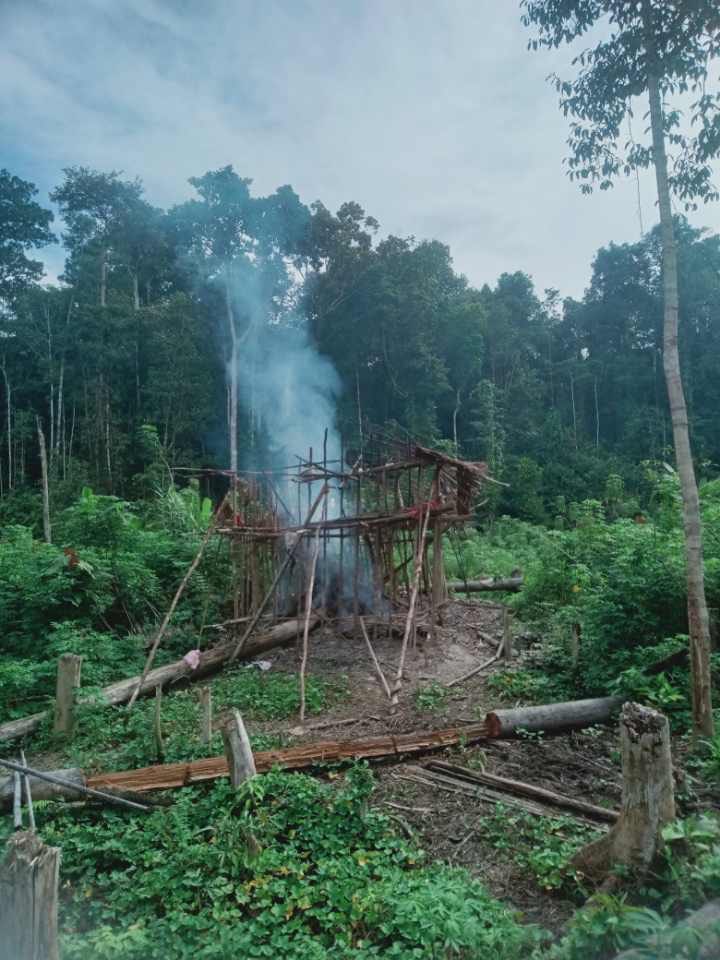
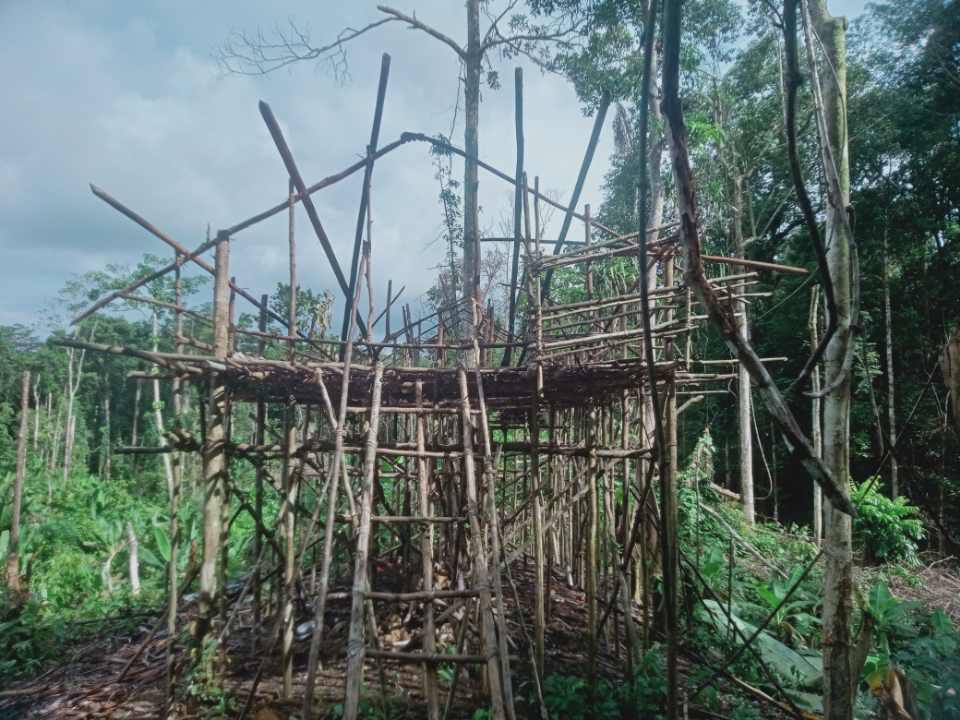
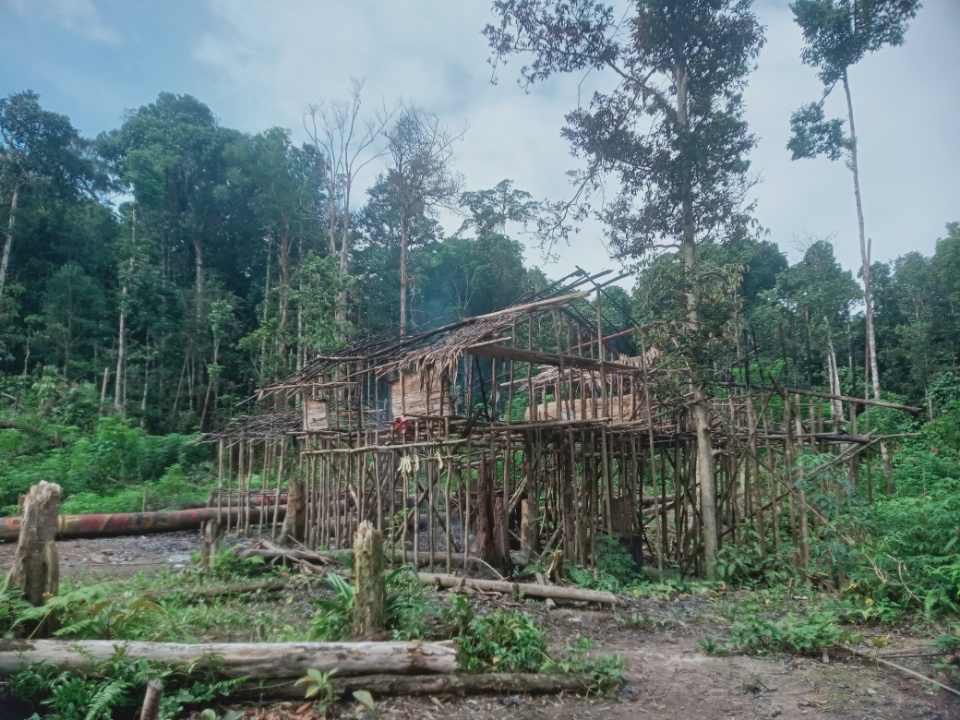

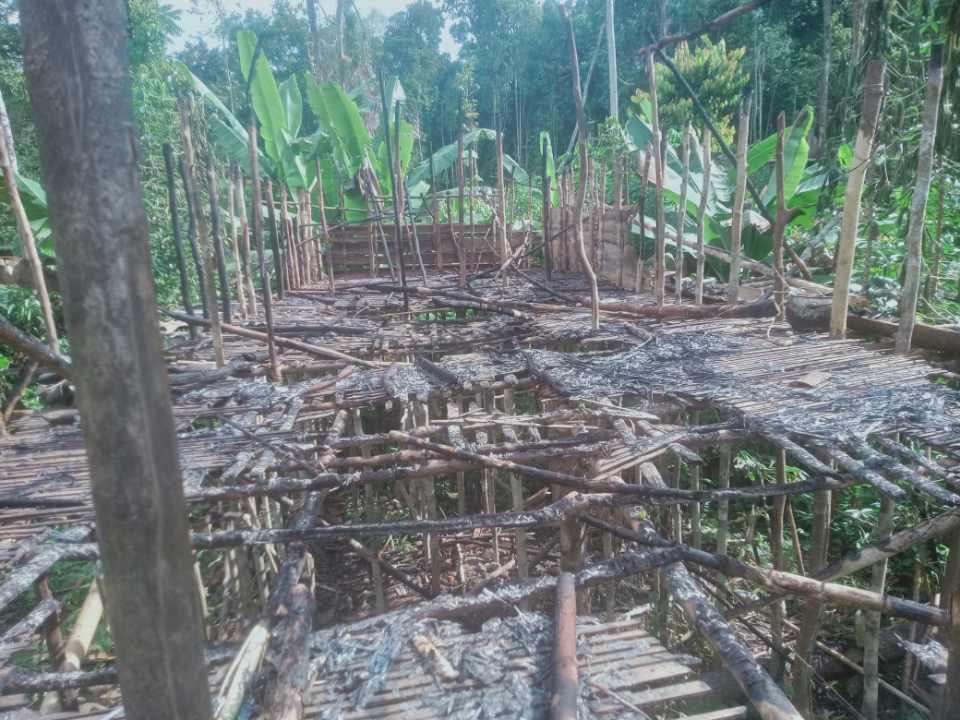
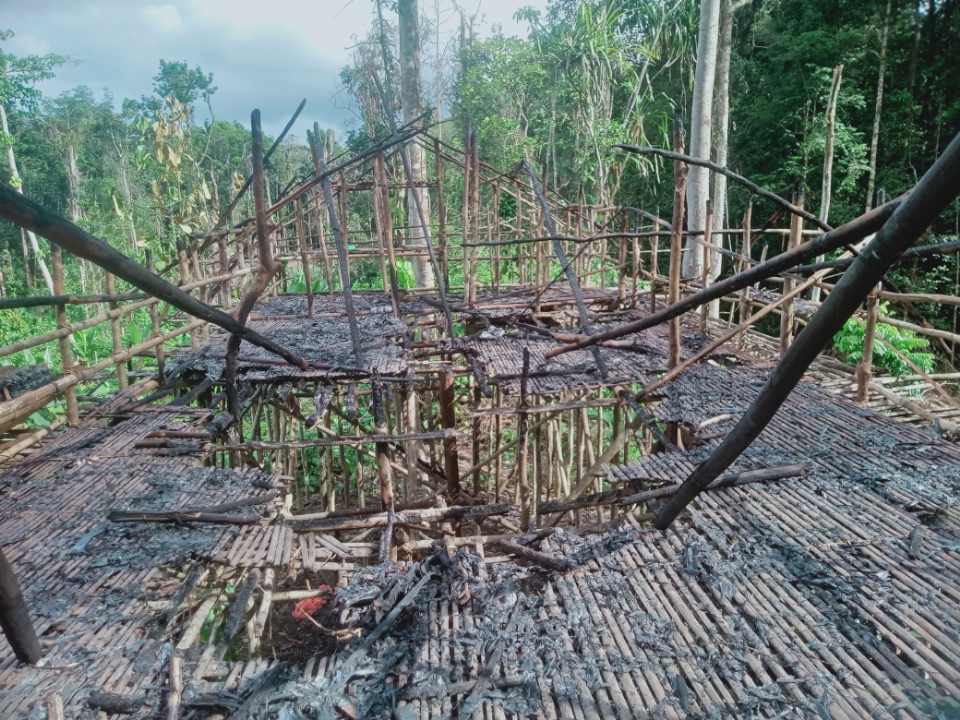
Puncak
In early June 2024, approximately 500 households in the districts Agandugume and Oneri reportedly fled to the Sinak District, Puncak Regency, due to military operations (see photos below, source: independent HRDs). Some IDPs fled to stay with relatives in the Nabire Regency. The IDPs have not been able to return to their homes due to the continued presence of non-organic military forces in the Puncak Regency. The displacement was triggered by the central government’s construction of logistics warehouses in Agandugume and Oneri Districts, despite local opposition, leading to armed clashes between the West Papua National Liberation Army (TPNPB-OPM) and Indonesian military forces.
Since early June, the armed clashes frequently re-occurred in the Sinak District until 8 July 2024, preventing IDPs from returning to their villages. The humanitarian situation is exacerbated by the lack of government assistance for the displaced populations. In addition to the 500 households from Agandugume and Oneri, another 400 households from the districts Magebume and Yugumoak have reportedly fled to the regencies Nabire and Timika since 3 March 2023, following a separate violent incident.
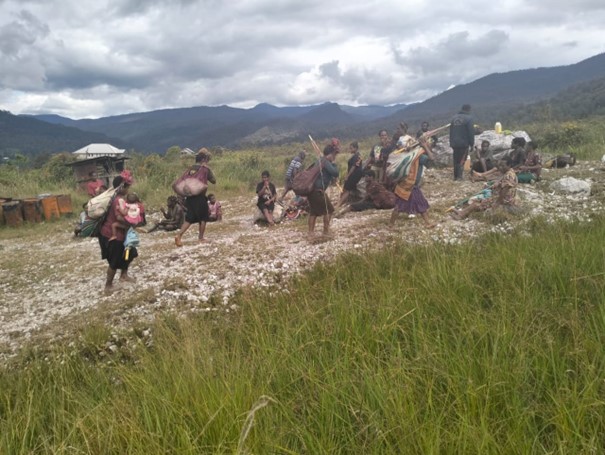
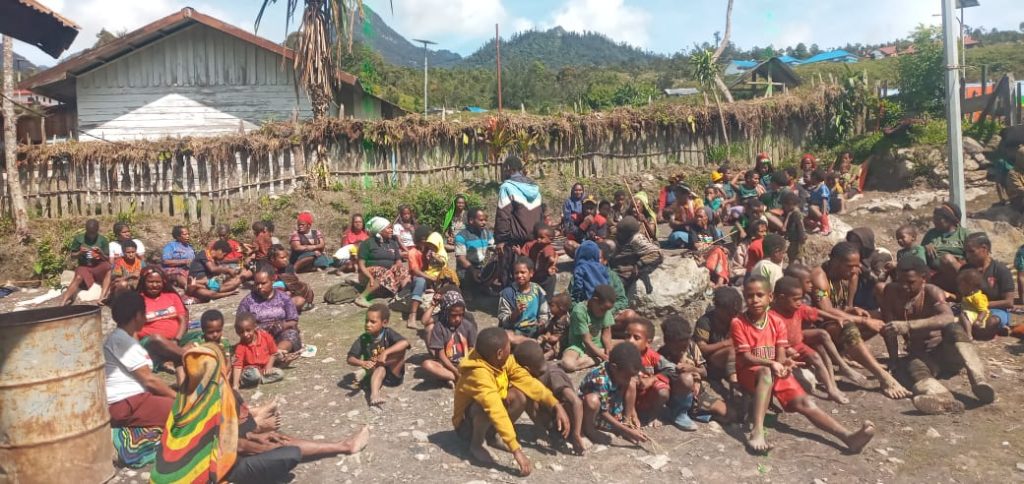
IDPs across West Papua, Indonesia, as of 15 September 2024
| Regency | No IDPs | Displaced since | Additional info |
| Nduga[2] | 56,981 | 4 Dec. 18 | IDPs originate from 11 districts in Nduga; more than 615 IDPs reportedly died as of January 2022 |
| Puncak[3] | 2,724 | 27 Apr. 21 | at least 16 IDPs have reportedly died during displacement |
| > 3,000 | 3 Juni 24 | 900 households from districts Agandugume and Oneri fled their villages | |
| Intan Jaya[4] | 5,859 | 26 Oct. 21 | at least 126 IDPs face health issues, and 11 IDPs reportedly died |
| Maybrat[5] | 3.435 | 2 Sep. 21 | IDPs originated from 5 districts; 138 IDPs reportedly died, and the local Govt reportedly facilitated the return of IDPs since November 2022 |
| Pegunungan Bintang (Kiwirok District) [6] | 2,252 | 10 Oct. 21 | about 200 IDPs fled to PNG, 74 IDPs reportedly died, and dozens of IDPs suffered from sickness |
| Pegunungan Bintang (Serambakon District) [7] | 91 | 18 Sep. 23 | ten persons sick, two women pregnant, 47 children among the IDPs |
| Yahukimo (Suru-Suru District) [8] | 1,971 | 20 Nov. 21 | IDPs from 13 villages sought shelter in 15 temporary camps, 16 women gave birth without medical attention, and 13 IDPs reportedly died. |
| Yahukimo (Dekai District) [9] | 554 | 21 Aug. 23 | 13 persons were sick; one died, and two females murdered |
| Fakfak (Kramongmongga District)[10] | 500 | 16 Aug. 23 | N/A |
| Paniai[11] | 2,500 | 12 Apr. 24 | internal displacements were reported from the districts of Paniai Timur, Agadide, Ekadide, and Bibida |
| T O T A L | > 79,867 | ||
[1] The term ‘West Papua’ in this paper refers to the western half of New Guinea Island, composed of the Indonesian provinces of Papua, Papua Pegunungan, Papua Tengah, Papua Selatan, Papua Barat, and Papua Barat Daya
[2] Compiled by a group of Papuan human rights defenders that visited IDPs from Nduga in the town of Wamena and surrounding areas between 12 and 20 July 2023
[3] Jubi (9.11.2021): SORAKPATOK: 300 tewas dan 50 ribu warga Papua mengungsi, available at: https://jubi.co.id/sorakpatok-300-tewas-dan-50-ribu-warga-papua-mengungsi/&
Jubi (12.07.2024): 500 KK dari Distrik Agandugume dan Oneri, sudah sebulan lebih mengungsi di Sinak, available at: https://jubi.id/polhukam/2024/500-kk-dari-distrik-agandugume-dan-oneri-sudah-sebulan-lebih-mengungsi-di-sinak/
[4] CNN Indonesia (30.10.2021): Ribuan Warga Papua Mengungsi Usai Pecah Kontak Senjata, available at: https://www.cnnindonesia.com/nasional/20211030195433-12-714496/ribuan-warga-papua-mengungsi-usai-pecah-kontak-senjata
[5] Figures published by the National human Rights Commission (Komnas HAM) in July 2023, updated information published by Jubi (10.04.2024): 3.387 warga sipil Maybrat masih mengungsi, available at: https://jubi.id/polhukam/2024/3-387-warga-sipil-maybrat-masih-mengungsi/
[6] Compiled from multiple lists with names of IDPs, which local human rights defenders compiled in Pegunugan Bintang between April and July 2023. Church workers updated the number of deaths in July 2023
[7] The number is based on a name list compiled by human rights defenders in Serambakon shortly after the displacements occurred.
[8] The number is based on data compiled by local church workers. The information was received in February 2022
[9] The number is based on a name list that human rights defenders in Dekai compiled in September 2023
[10] Based on an estimation made by local human rights defenders in Kramongmongga in September 2023
[11] Based on information shared by local observers in Paniai on 16 April 2024
